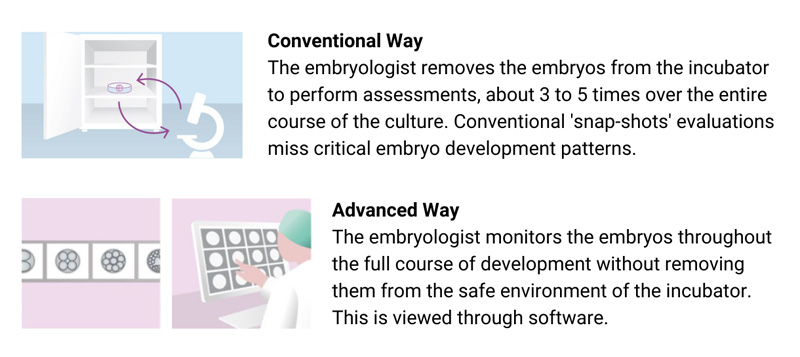- Home
- Prelims
- Mains
- Current Affairs
- Study Materials
- Test Series
Time-lapse imaging, or Embryoscope
While in-vitro fertilisation has significantly improved the chances of helping people with fertility problems start a family, it’s still only successful around 24% of the time. This is why some people trying to conceive via IVF may decide to look into so-called add-on treatments in the hopes of increasing their chances of having a baby.
There are a range of add-on procedures that may be offered to patients by both private and public health providers. But the problem with these procedures is that there’s currently little evidence that they actually improve the chances of having a baby. Despite this, health providers, including the UK’s NHS, continue to market these costly procedures to patients.
So if you’ve been considering an IVF add-on, it’s very important you understand exactly what they are, and why they may not increase your chances of conceiving. Here are four of the most common procedures:
Time-lapse imaging
Time-lapse imaging is a non-invasive technology. This involves growing the embryo in a specially designed incubator fitted with a camera.
This camera takes pictures of each embryo at frequent intervals, allowing embryologists to select an embryo that’s most likely to develop into a baby. This allows embryologists to choose suitable embryos with no additional harm to the embryo or patient.
During conventional IVF procedures, the embryo needs to be removed from the incubator and examined under a microscope. So the advantage of time-lapse imaging is that embryos can be left undisturbed in the incubator until embryo transfer.
Unfortunately, there’s currently no evidence to suggest this technology will improve the chances of having a baby compared to conventional IVF methods.
 Embryo screening
Embryo screening
PGT-A (aneuploidy screening after embryo biopsy) is an invasive procedure that involves taking several cells from an embryo and assessing the number of chromosomes. This analysis can be used to show if the embryo has a normal or abnormal set of chromosomes.
Traditionally, this treatment is offered to women who are older, typically over the age of 37, as there’s a higher chance of chromosome abnormalities in her embryos. PGT-A is also offered to patients with a history of miscarriages or those with a family history of aneuploidy (having missing or extra chromosomes).
The advantage of PGT-A is that it allows people to have an embryo transferred that’s genetically normal. Traditional methods of assessment, which would only view the embryo under a microscope prior to transfer, won’t be able to detect this.
However, there are currently questions over the reliability of the procedure. So while it’s more likely that an embryo with a normal set of chromosomes will be transferred, the procedure has not been shown to increase the chances of having a baby.
Endometrial scratching
In order to become pregnant, the embryo needs to implant itself into the lining of the womb.
But to improve the chance of this happening in an IVF cycle, some clinics offer a procedure called “endometrial scratching”. It’s thought that by “scratching” the endometrial lining with a small, sterile plastic tube, the body will help trigger repair mechanisms where it was scratched.
The hormones and proteins needed to repair the lining are said to improve the chances of the embryo implanting itself. The treatment is invasive and can cause discomfort for some patients. It’s also unknown whether there’s any risk to the embryo with this procedure.
Embryo scratching is typically only offered to women who have failed repeated implantation attempts. There’s currently no evidence showing it to be better than conventional IVF methods in helping women conceive.
Embryo glue
Embryo glue works by placing embryos in a culture dish with the liquid hyaluronan up to 30 minutes before an embryo transfer. Hyaluronan is abundant in our body and is similar to the fluid found between our joints. It’s thought that doing this will improve the chances of the embryo implanting itself in the womb.
Researchers aren’t entirely sure how hyaluronan works, but many believe it helps embryos better stick to other cells during implantation. However, to date, no large studies have shown embryo glue to have a significant benefit on improving conception.
While these aren’t the only add-on treatments out there, it’s worth noting that no add-ons have been given a “green light” rating by the Human Fertilisation and Embryology Authority (HFEA). Green light ratings are only given to add-on procedures shown to be safe and effective at improving chances of conception beyond conventional IVF.
While fertility clinics can help people struggling to conceive, it’s important to understand add-ons largely have no benefit over traditional IVF techniques — especially considering how costly these treatments can be. Often, a standard IVF cycle will offer the best chance of success on its own.









 Latest News
Latest News
 General Studies
General Studies